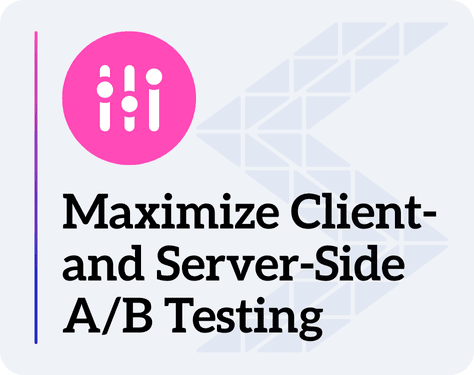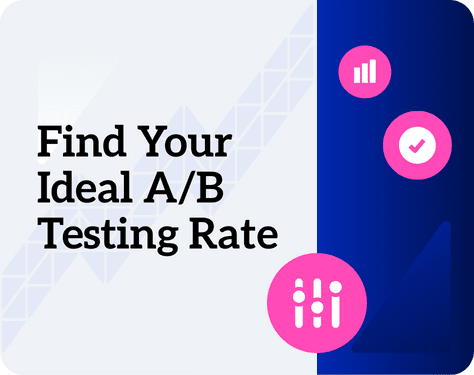Selling parts online requires that retailers successfully match the right parts with the right car – a process known as automotive fitment. It’s more complex than other ecommerce sales channels because of the incredible variety of cars, parts, suppliers, and manufacturers.
Despite this challenge, it’s important to make parts available via online channels because this is what customers want and need. Parts for used cars are in high demand, a trend likely to continue thanks to a perfect storm of external factors impacting the industry. In this post, we’ll review some of the challenges of online automotive fitment and explain how ecommerce technologies that incorporate AI and machine learning help parts sellers successfully serve customers across all digital channels. But first, some trends.
Why Digital Automotive Fitment is Important
The length of time Americans are holding onto their cars has increased for the sixth straight year in a row. The average vehicle age is now 12.5 years in the U.S. That amounts to over 120 million cars, right now, that are on the road for at least a dozen years.
The reasons we’re holding onto our vehicles longer are numerous. The automotive industry was one the hardest hit during the pandemic, with several things converging that made it difficult for consumers to buy new and used cars and sellers to secure parts and inventory. Supply chain issues and trade reductions led to inventory scarcity meant people needed to keep their existing cars longer.
In 2024, we’re still feeling the effects of this monumental upheaval, with some new trends added to the mix, many tied to cost. The total cost of owning and maintaining a car in the U.S. climbed to over $12,000 in 2023. That doesn’t include car payments (the national average is $729 per month). Car insurance rates are also increasing because claims are pricier, they’re up over 20% from last year.
Holding onto cars longer means more repairs, but even newer cars require maintenance and parts. And, as with everything in the retail sector, people are increasingly buying what they need online.
What is Car Fitment?
Car fitment, also known as vehicle fitment or automotive fitment, is a process performed by car buyers – including auto parts retailers, manufacturers, and direct customers.
Fitment matches specific auto parts to compatible vehicle makes, models, and years. This helps customers find and purchase parts that work with their vehicles. Online fitment systems use databases and algorithms to help customers quickly find compatible parts in digital channels like ecommerce marketplaces and OEM websites.
Automotive Fitment Examples
Here are some examples of what an automotive fitment experience looks like on digital channels:
- Amazon’s part finder widget: Customers enter their vehicle’s make, model, and year to see compatible parts. This tool uses XML files submitted by sellers containing fitment data for their products.
- eBay Motors’ “garage” feature: Shoppers can add vehicles to their virtual garage to find parts and accessories that fit their specific cars.
- Walmart Marketplace’s auto parts fitments widget: Walmart’s fitment tool lets customers navigate millions of products, refining their search based on attributes like part terminology ID and manufacturer part number.
- GM’s online parts marketplace: In 2022, General Motors launched an ecommerce parts marketplace with a catalog of 45,000 parts. Parts can be picked up from hundreds of participating GM dealerships or shipped direct to the end consumer.
How does Vehicle Fitment Work?
Vehicle fitment systems rely on extensive databases of vehicle and part information to connect buyers to the right parts. These databases, like the Auto Care Association’s ACES (Aftermarket Catalog Exchange Standard) and PIES (Product Information Exchange Standard), contain standardized data about vehicle makes, models, years, and compatible parts.
When a customer searches for a part, the fitment system cross-references their vehicle information with the parts database. Incompatible items are filtered out, with only the parts that match the specific vehicle displayed in the search results. For example, if a customer enters information for a 2015 Toyota Camry, the system will display only parts designed to fit that exact model and year.
Most parts websites integrate these parts databases into their inventory management system using APIs which allow for real-time updates to fitment data. Accuracy is key here, so real-time integration is important particularly as new vehicles and parts enter the market. Advanced personalization platforms like Monetate also incorporate machine learning to improve search results and provide personalized recommendations based on customer behavior and preferences.
Effective fitment systems improve the customer experience by making it much easier to find the right parts. Getting it right the first time also reduces returns and increases sales since customers can be more confident about their order.
Automotive Fitment and Personalization
Consumers are getting used to buying parts online from marketplaces like Amazon, Walmart, and eBay – all of whom have robust auto parts offerings. This puts pressure on manufacturers and parts dealers to improve and facilitate what is a fairly complex purchasing process.
Personalization is an important way to do this. A diverse customer base that includes dealerships, repair shops, and individual car owners requires personalization so that buyers can be matched with the correct parts and supplies.
Personalization in automotive fitment starts with matching parts to vehicles, but it goes beyond this initial match. It involves understanding customer behavior, preferences, and needs so the right parts and suggestions can be served up at the right time. Dynamic bundling, an AI-powered merchandising technology that recommends related products to customers as they shop, is focused on this exact task.
Bundling helps customers focus on what’s needed to complete specific jobs. For example, a customer searching for brake pads could be presented with a bundle that includes rotors, brake fluid, and the necessary tools to fit their specific vehicle.
How can a Personalization Solution Improve the Automotive Fitment Process?
Personalization addresses automotive fitment needs in the digital parts buying space in a few important ways.
- It helps parts retailers adapt to the influx of aging vehicles on the road and accommodate the increase in digital parts purchases.
- It makes the shopping process easier for customers and more accurate since AI-powered solutions like Monetate’s Dynamic Bundles group necessary parts and tools for specific repair tasks.
- It adjusts to different audiences, providing highly relevant product recommendations based on the context of a given buyer and search.
- It improves sales and revenue by increasing average order value and reducing returns.
Dynamic bundling combines the best of AI technology with human experience. Monetate’s dynamic bundling feature allows parts dealers to use their own experienced merchandisers to shape the ML algorithms, which can continuously refine recommended bundles based on customer behavior and inventory changes.
Monetate’s suite of personalization features including automated personalization that adjusts content based on user, segmentation and targeting, and personalized search work together with features like dynamic bundling to create the kind of fully immersive, comprehensive ecommerce experience that auto parts customers demand.



